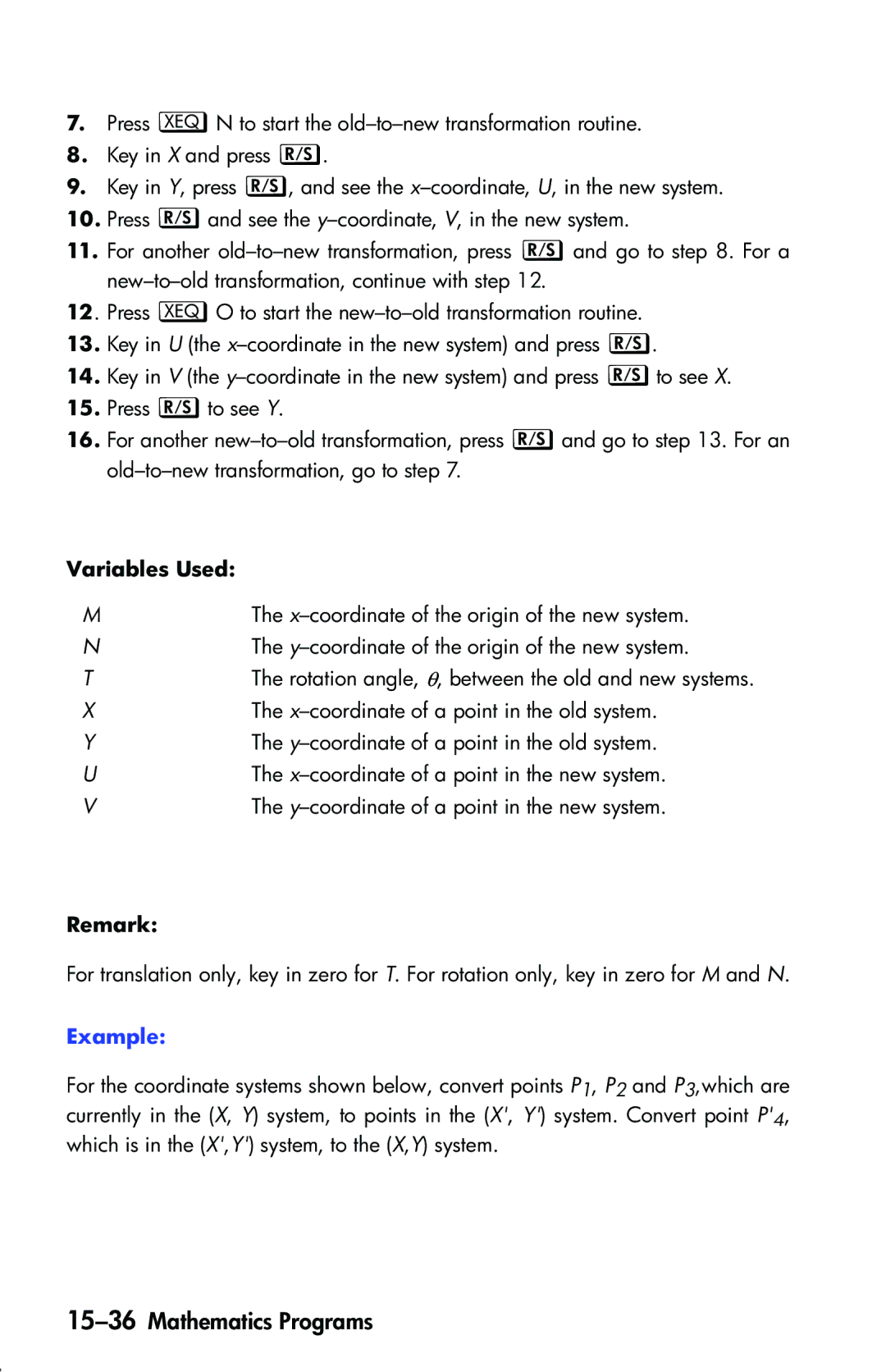7.Press XN to start the
8.Key in X and press g.
9.Key in Y, press g, and see the
10.Press gand see the
11.For another
12. Press XO to start the
13.Key in U (the
14.Key in V (the
15.Press gto see Y.
16.For another
Variables Used: |
|
M | The |
N | The |
T | The rotation angle, θ, between the old and new systems. |
X | The |
Y | The |
U | The |
V | The |
Remark:
For translation only, key in zero for T. For rotation only, key in zero for M and N.
Example:
For the coordinate systems shown below, convert points P1, P2 and P3,which are currently in the (X, Y) system, to points in the (X', Y') system. Convert point P'4, which is in the (X',Y') system, to the (X,Y) system.
